Simple Solar Panel Wiring to Inverter:
This Diagram Shows Most Modern Solar Panel Installations use Single-Conductor Photovoltaic Wire, Between 10 And 12-Gauge AWG. Wiring is Required To Connect The Solar Panels to The Charge Controller, Inverter, And Battery. Solar Panels have two Terminals one Positive And one Negative. To Wire Two or More Solar Panels and Batteries in Parallel, Simply Connect the Positive Terminal of the Solar Panel or Battery to the Positive Terminal of the Solar Panel or Battery
Diagram of Solar panel wiring:
Components Need for this Project:
You can get the components from any of the sites below:
- Solar Panel [See Buy Click Amazon]
- Solar Regulator [See Buy Click Amazon]
- Battery [See Buy Click Amazon]
- Inverter [See Buy Click Amazon]
- Socket [See Buy Click Amazon]
- Switch [See Buy Click Amazon]
- Bulb [See Buy Click Amazon]
- TV [See Buy Click Amazon]
Read Also:
Components used to make the Solar Panel wiring:
01. Solar Panel
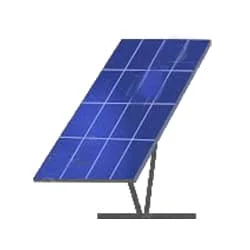 |
| Fig 2: Solar Panel |
Photovoltaic solar panels can generate electricity directly from sunlight. Photovoltaic (PV) modules are connected assemblies of photovoltaic solar cells available in a package of various voltages and wattages, but not direct sunlight. And the sun also does not transmit electricity directly to the earth. Sends light and heat. It has to convert our electricity in different ways. We get heat energy from the sun very easily. Instead, it transmits light and heat.
02. Solar Regulator
 |
| Fig 3: Solar Regulator |
The function of a solar charge controller is to charge the battery by regulating the voltage and current coming from the solar. That is, reduce the voltage slightly so that the battery cell is not damaged due to high voltage. It's called a controller rather than a charger because it's so smart. Automatically provides proper power to the battery according to over voltage, over the current, short circuit, and battery temperature. There are two types of charge controllers. PWM and MPPT, PWM is relatively cheaper but has lower efficiency. On the other hand, good quality MPPTs are very efficient and offer maximum safety to the battery.
03. Battery
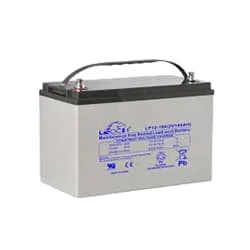 |
| Fig 4: Battery |
A 12-volt Battery is an Irregular Battery used in Specific Electronic Applications. Of all the types of Batteries, the 12-Volt Battery is one That Looks Very Different Depending on its use. It can be Large or small, Heavy or Light. Twelve-volt batteries are commonly used in RV, Boat, and Other Automobiles Systems. From a Technical Perspective, a Battery Uses one or more cells to Allow a Chemical Reaction Creating the flow of Electrons in a Circuit.
04. Inverter
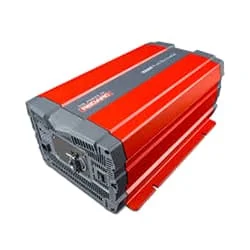 |
| Fig 5: Inverter |
An inverter is an electrical device that converts DC current into alternating current (AC). AC can be operated at any voltage and frequency system with suitable transformers, switches, and control circuits. Most electrical appliances run on AC (Alternative Current). Nowadays inverter is a very common device that is used to change the voltage in any type of machine or to control the speed of the induction motor. For example, the power supply in our country is 50 Hz, and the speed of the motor will also be fixed at this fixed Hz. In such cases inverter is used to drive the motor slowly or strongly.
05. Socket
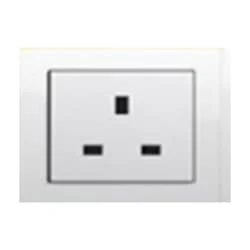 |
| Fig 6: Socket |
A socket is a type of equipment used in electrical wiring lines that always has an electrical connection. According to the need, it can be supplied to the electrical equipment. In case of electric iron, electric hand drill machine and electric hand grinder etc. two-pin socket with earth terminal is used. Also, three-pin sockets are used for electrical appliances that have a metal body and are likely to be electrified. Eg – Refrigerator, room heater, table heater, hot-plate, electric oven etc.
06. Switch
 |
| Fig 7: Switch |
A Single-Pole, Single-Throw (SPST) Switch. It's Got one Output and One Input. The Switch will Either be Closed or Completely Disconnected. SPSTs are Perfect for on-off Switching. They're also a Very Common Form of Momentary Switches. SPST Switches are Commonly Used in a Variety of Electrical Circuits and Applications, Such as Turning on And off Lights, Fans, and Other Appliances. They can Also be Used to Control the Flow of Electricity to Different Parts of a Circuit or to Switch Between Different Circuits Altogether.
07. Bulb
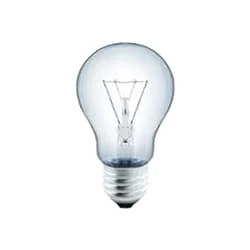 |
| Fig 8: Bulb |
CFLs work in a completely different way from ordinary lamps, they work by using a different process called fluorescence rather than generating light from heat. A typical light bulb wastes 90% of energy and converts only 10% of energy into light, this is where CFL has the biggest advantage. CFL- Curved or conical glass tube filled with argon and a small amount of mercury vapor. The inner wall of the glass is coated with fluorescent material. CFL- It is manufactured using the principle of creating fluorescent light. CFL- Originally white in color but now the construction and use of CFLs producing colored light has become popular.
08. TV
 |
| Fig 9: TV |
LED TVs can now be used as monitors. VGA & HDMI input options are provided on the TV. From these 2, you can connect your CPU to your CPU and use the TV as a monitor. Large screen size, advanced HD picture quality, HD sound quality, and clear display are some of the best features of smart LED TV.Internet usage, pen-drive support, video recording, online video streaming, checking social media notifications, etc.You can do all these things on a smart TV as well. Smart TV is a device that is provided with a large LED screen. Smart TVs need an operating system (OS) to work.
Thank You for visiting the website. Keep visiting for more Updates.


Post a Comment
Do leave your comments